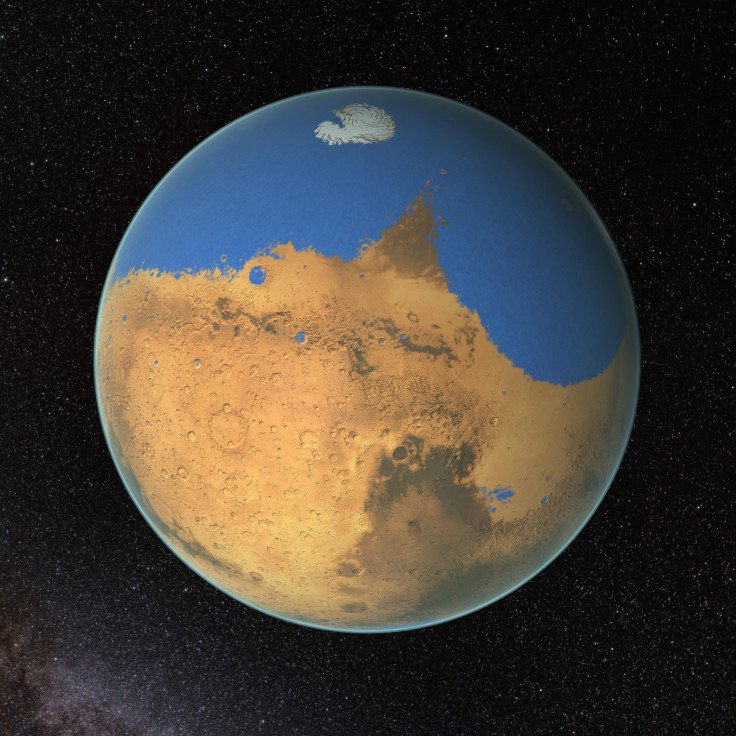Mega Tsunamis May Have Wiped Out Ancient Shorelines On Mars

Mars, despite its current rusted and parched appearance, was once a world where water flowed freely. Detailed observations of the red planet’s atmosphere and surface have led scientists to speculate that perhaps about 3.8 billion years ago, Mars had enough liquid water to form an ocean occupying almost half of its northern hemisphere.
However, scientists have not been able to find this primordial ocean’s coastline despite there being strong evidence that such large water bodies once existed on the fourth planet from the sun.
A new study has now revived the ancient ocean hypothesis. The study, published in the journal Nature Scientific Reports, suggests the ocean’s shorelines were overrun and buried by two ancient mega tsunamis that occurred approximately 3.4 billion years ago.
“For more than a quarter century, failure to identify shoreline features consistently distributed along a constant elevation has been regarded as inconsistent with the hypothesis that a vast ocean existed on Mars approximately 3.4 billion years ago. Our discovery offers a simple solution to this problem; widespread tsunami deposits distributed within a wide range of elevations likely characterize the shorelines of early Martian oceans,” lead author Alexis Rodriguez from the Planetary Science Institute in Tucson, Arizona, said in a statement.
The study, based on images captured by Mars-orbiting spacecraft, posits that over a span of a few million years about 3.4 billion years ago, two meteors crashed into the Martian ocean, triggering 400-foot-high tsunami waves that plowed into its coast and inundated huge swaths of land.
Following the first tsunami event, which the researchers said dropped enormous boulders that obscured the original coastline and left behind what’s known as “backwash channels,” the planet cooled down. When the second meteor struck, it crashed into a frozen ocean, triggering tsunami waves made of icy slurry. The slushy waves generated by the younger tsunami did not drain away like the first one, but spread inland and stuck, wiping out what was left of the original coastline.
“During the time period that separated the two tsunami events the ocean level receded to form a lower shoreline and the climate became significantly colder. Evidence for climate change is reflected in the morphology of the tsunami deposits,” Rodriguez said. “We have already identified some areas inundated by the tsunamis where the ponded water appears to have emplaced lacustrine sediments, including evaporites. As a follow-up investigation we plan to characterize these terrains and assess their potential for future robotic or human in-situ exploration.”
© Copyright IBTimes 2024. All rights reserved.






















